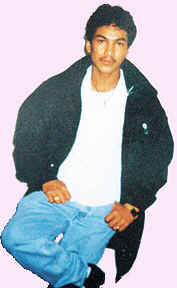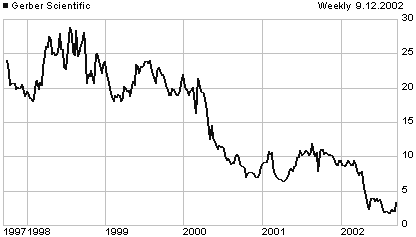 Deaths
which occurred on a 12 September: Deaths
which occurred on a 12 September:
2002:: 27 Tzutuhil Mayan Indians in mud- and rock-slide off the
slopes of the Tolimán volcano, at 21:00, at aldea El Porvenir,
municipio de San Lucas Tolimán, departamento de Sololá,
Guatemala, after heavy monsoon rains. 14 of the dead are children. Of
the 14 injured survivors, one dies the next day.
2002:: 4 Guatemalans: Juan Méndez, José Alvarado, Sebastián Morales,
Cecilio Morales, and 10 Hondurans: Carlos Humberto Izaguirre, 25, Juan
Ramón Turcios Matamoros, 27
Alexis Hermelindo Alcantara Acosta, José Santos Alvarado Hernández, Alcides
Chávez Hernández, Pablo Euceda Amaya, José Santos Euceda, Dionisio Fúnez
Díaz, Sebastian García García, Belkin Padilla Alvarado, legal guest
workers employed by Evergreen Forestry Services, in a rented van driven
by Turcios, which, at 08:30, traveling at 110 km/h, falls off the one-lane
wooden railingless John's Bridge into a river between Churchill and Eagle
lakes near the entrance to the Allagash Wilderness Waterway in Maine.
The Guatemalans are from departamento de Huehuetenango. Guatemala, as
is the lone survivor, Edilberto Morales Luis, 24, who escapes by kicking
out the back window of the van as it sinks in 5 meters of water. The
15 workers used the rented van to commute 5 hours a day, mostly over
dirt roads, from their rented rooms in Caribou to the remote location
140 km away where they were clearing brush. Izaguirre [photo >],
like the other Hondurans from a village at the Salvadorian border, Aramecina
(where most men go to work in the US], Valle departamento, had entered
the US undocumented in 1993; he had married a Maine woman in May 2002.
Turcios had entered the US in 1998 with a visa; and would occasionally
visit his wife Italia Turcios, and their two little boys and infant girl,
in Santa Barbarita, Santa Bárbara, Honduras. Fúnez was
working in the US since 1996. The Hondurans are from the Aramecina municipio
hamlets Santa Lucía, El Cantil, La Caridad, La Jiota, and Curarén.
2002 Anne-Marie (née Cassie) Friedlander, 49, Norbert “Avraham”
Friedlander, 55, and Aharon Friedlander who, in Jerusalem, is shot
by a policeman after stabbing with a kitchen knife the first two, his
stepmother and Jewish father, immigrants (01 August 1995) from Germany,
who were married in 1986 (she converted to Judaism in 2000), two years
after Norbert (who changed his name to Avraham) divorced his Protestant
second wife of 7 years, the mother of Aharon, who she says was psythotic
from youth, but was never subjected to treatment. When she could no longer
handle him, in 1997, she sent him to live in Israel with his father.
Aharon did not convert to Judaism. After completing, without a diploma,
his high school in Israel, Aharon went back to live in Germany. He returned
to Israel May 2002, more psychotic than ever, alcoholic and drug-addicted.
On 12 September 2002 a loud quarrel broke
out in the Friedlander home. Aharon ran out. His father ran after him,
grabbed Aharon, and took him home. The quarrel erupted again and the
neighbors called the police. A policeman arrived quickly. Avraham went
outside to talk to the officer and explain to him that it was a family
quarrel. He seemed to be bruised, and the policeman tried to persuade
him to file a complaint. Avraham refused. The policeman asked to see
some ID for Aharon. Anne-Marie, who had come down from the top floor,
said she would bring Aharon's passport. She went to the bedroom on the
lower floor. Avraham, Aharon and the policeman were on the middle level,
where the kitchen is, talking. Aharon said he wanted a glass of water
and went to the kitchen. He grabbed a knife. As Avraham and the policeman
continued to converse, Aharon began to walk down the stairs where Anne-Marie
was now approaching with the passport in her hand. He stabbed her and
she screamed. Avraham ran to save her with the policeman behind him.
The two small children, who were in the house and apparently saw everything,
ran out to the neighbors. Avraham tried to wrest the knife from Aharon,
but he resisted and stabbed his father. The policeman started shooting,
firing eight bullets. One of the bullets struck Avraham, but according
to the police he died from the stab wounds. — MORE
2001 A Palestinian man by Israeli troops firing toward a Palestinian
taxi, in the Gaza Strip. Three Palestinians are wounded. This brings
the al-Aqsa intifada body count to 621 Palestinians and 172 Israelis
2001 Three Palestinian security officials, when their convoy of
unmarked cars came under an Israeli helicopter attack near Tamoun, south
of Jenin, West Bank. The men were hit by a missile after they had leapt
from their cars and sought in an underground aqueduct.
2001 Two members of Islamic Jihad, and girl, 11, sister of the
owner of the home where they were hiding, by Israeli tank shells, in
Arrabeh, south of Jenin, West Bank..
1988: 45 persons by Hurricane Gilbert in Jamaica. Material damages
are estimated at up to $1 billion.
1986 Cuatrocientas personas muertas y más de 2600 heridas en el
norte de Vietnam, a causa del ciclón "Wayne".
1981 Eugenio Montale, escritor italiano, Premio Nobel 1975. |
 2002 Computerized manufacturing support company Gerber Scientific
announces first-quarter earnings before items of 10 cents a share, up
from 3 cents a share in the 2001 first quarter. On the New York Stock
Exchange, its stock (GRB) surges from its previous close of $2.01 to
an intraday high of $3.63 and closes at $3.50. It traded as low as $1.40
on 24 July 2002 and still has a long way to go to reach its 20 July 1998
high of $28.88. [5~year price chart >]
2002 Computerized manufacturing support company Gerber Scientific
announces first-quarter earnings before items of 10 cents a share, up
from 3 cents a share in the 2001 first quarter. On the New York Stock
Exchange, its stock (GRB) surges from its previous close of $2.01 to
an intraday high of $3.63 and closes at $3.50. It traded as low as $1.40
on 24 July 2002 and still has a long way to go to reach its 20 July 1998
high of $28.88. [5~year price chart >] Deaths
Deaths